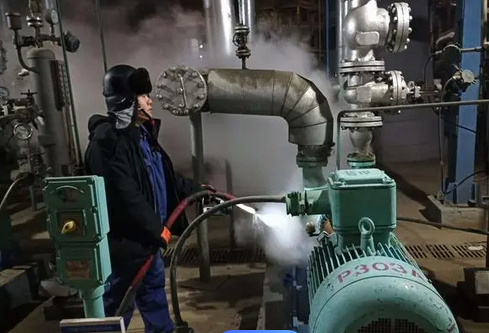Anti-leakage design of chemical pumps
In the chemical industry, pumps are key equipment, and their anti-leakage design is crucial to ensuring production safety, reducing environmental pollution and improving economic benefits. The following discusses the anti-leakage design strategy of chemical pumps from several aspects:
1. Optimize the sealing structure
The rationality of the sealing structure is the key to preventing leakage. Chemical pumps often use mechanical seals or seals made of special materials, such as silicon carbide, cemented carbide, etc. These materials have excellent wear resistance and corrosion resistance, which can effectively extend the service life of the sealing surface and reduce the risk of leakage. In addition, the fluid dynamics characteristics of the sealing surface can be simulated and optimized by fluid mechanics analysis software to further reduce the risk of leakage.
2. Select manufacturing materials
The selection of materials is directly related to the corrosion resistance and sealing of the pump. According to the characteristics of chemical media, such as corrosiveness, high temperature, high pressure, etc., suitable materials need to be selected to manufacture pump bodies, seals and other components. For example, for highly corrosive media, corrosion-resistant materials such as stainless steel and fluoroplastics can be used; for high-temperature media, materials such as high-temperature resistant alloys need to be selected.
3. Strengthen manufacturing quality control
Quality control in the manufacturing process is an important link to ensure the sealing performance of the pump. The processing accuracy should be strictly controlled to ensure that the finish and matching accuracy of the sealing surface meet the design requirements. At the same time, key components should be strictly inspected and tested, such as the size, hardness, corrosion resistance and other indicators of the seal to ensure its reliable quality.

4. Standardized installation and commissioning
The installation and commissioning process should be carried out in strict accordance with the operating procedures to ensure that the pump is installed in the correct position, the tightening force is appropriate, and the seal is installed in place. During the commissioning stage, the operating parameters of the pump, such as speed, pressure, etc., should be gradually adjusted, and the operating status and leakage of the seal should be observed to ensure that the pump operates in the best condition.
5. Strengthen operation and maintenance
Establish a regular maintenance system, clarify the maintenance cycle and inspection content, and monitor and record the operating status of the pump in real time. During the maintenance process, focus on the wear of the seal, the cleanliness of the sealing surface, and the looseness of the fasteners, and promptly discover and deal with potential problems. At the same time, strengthen the training of operators, improve their maintenance skills and awareness, and ensure that the pump is properly maintained and maintained.




